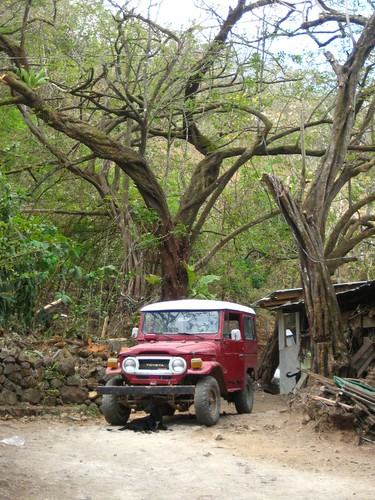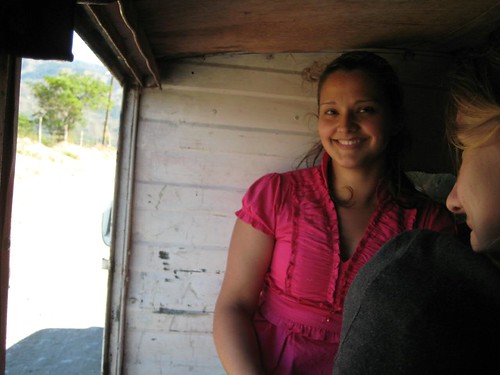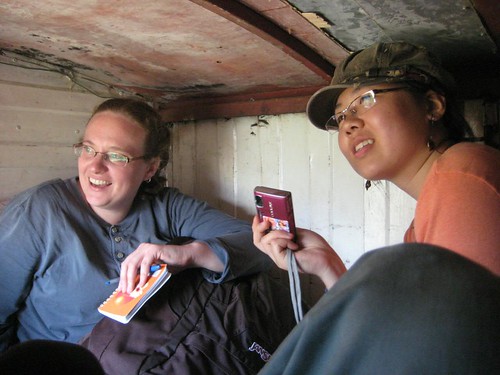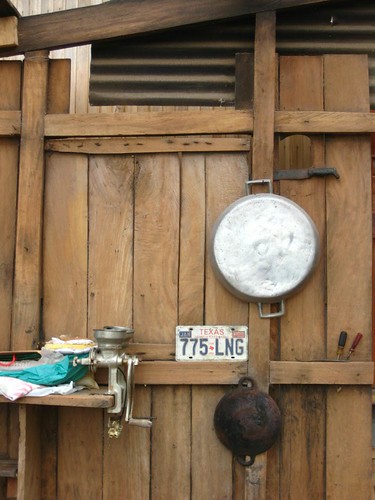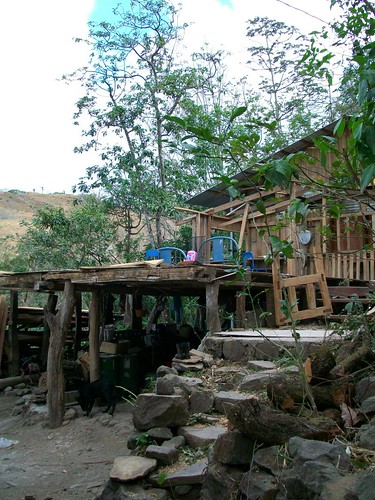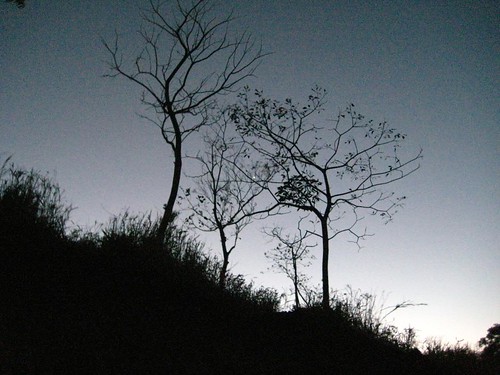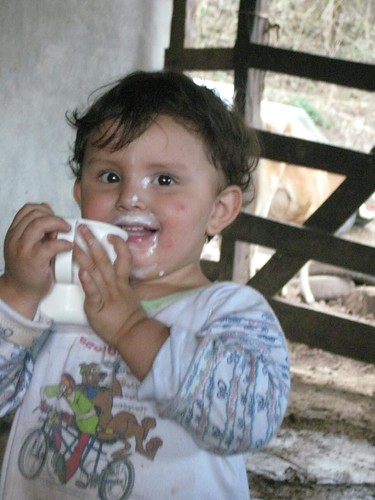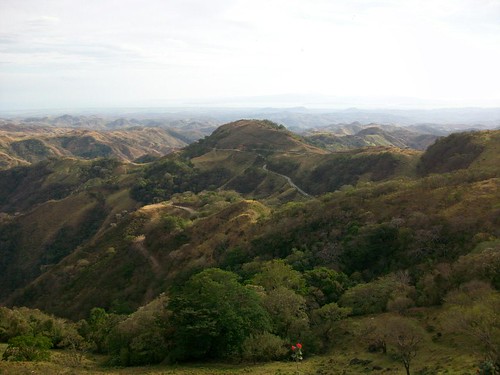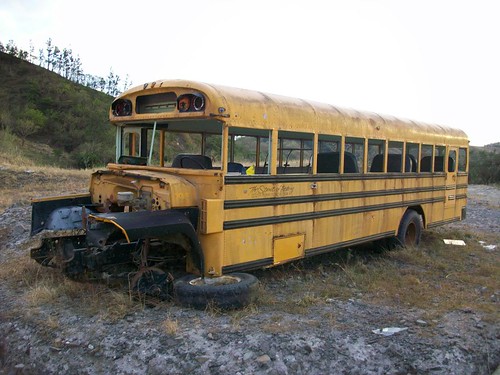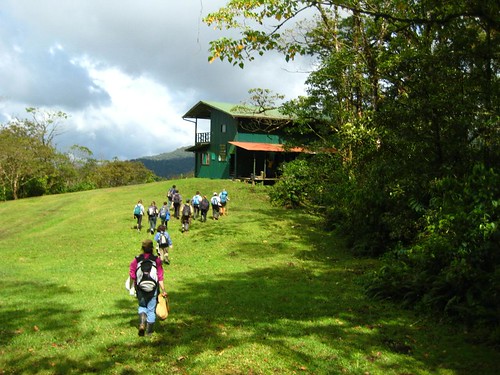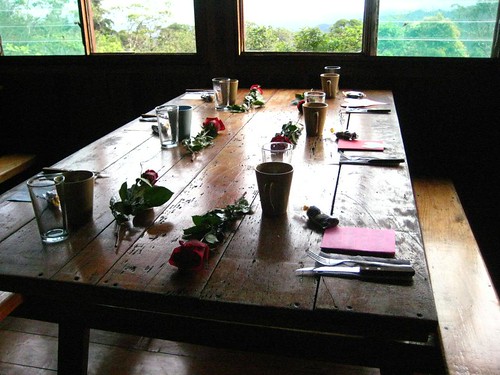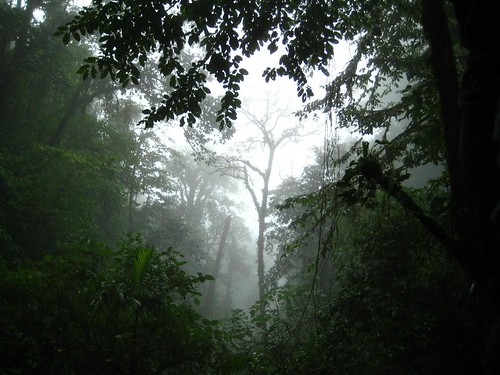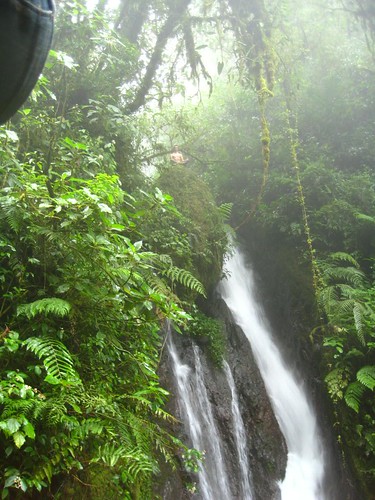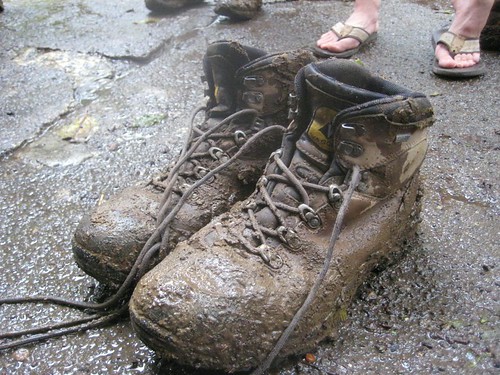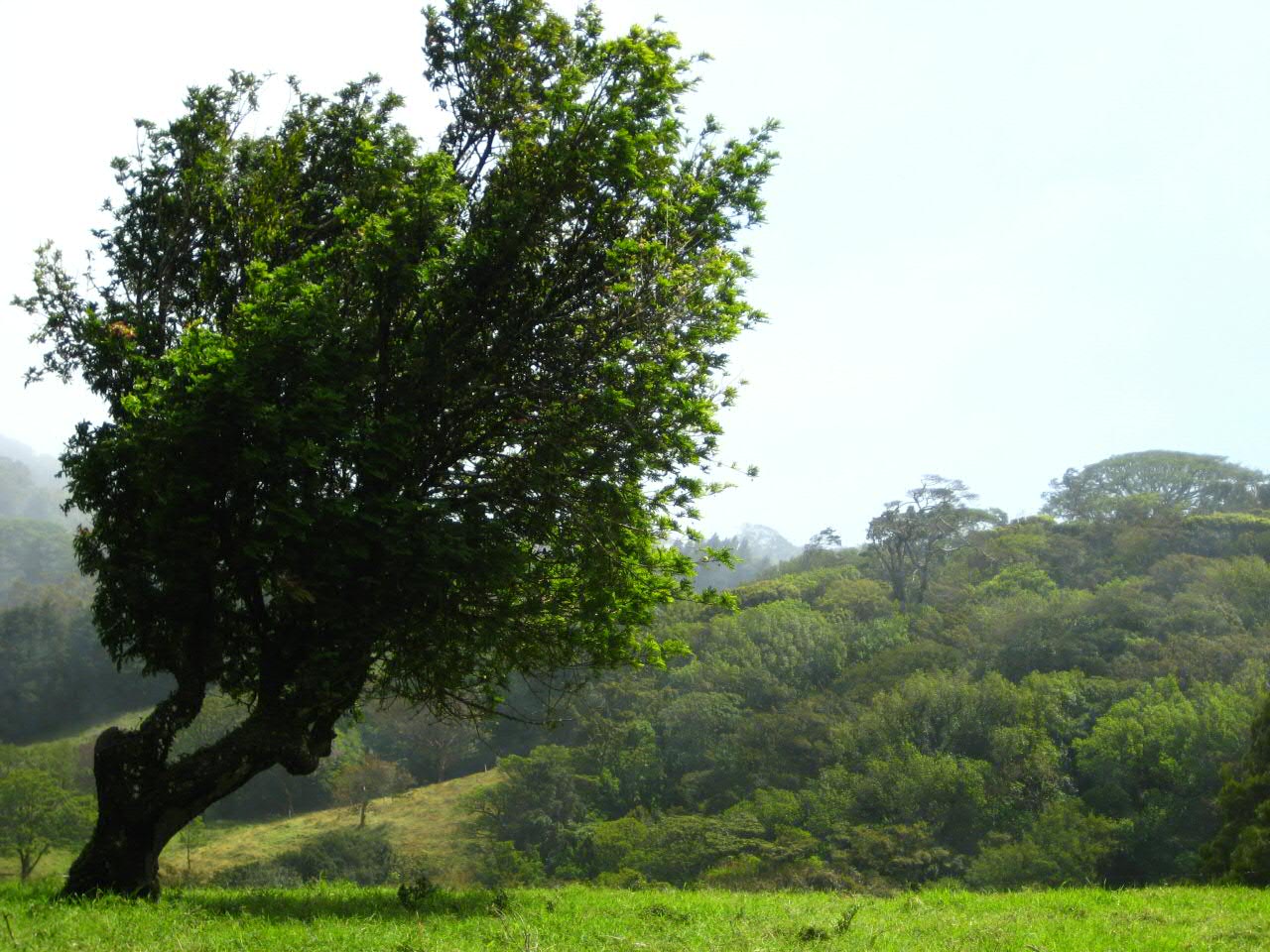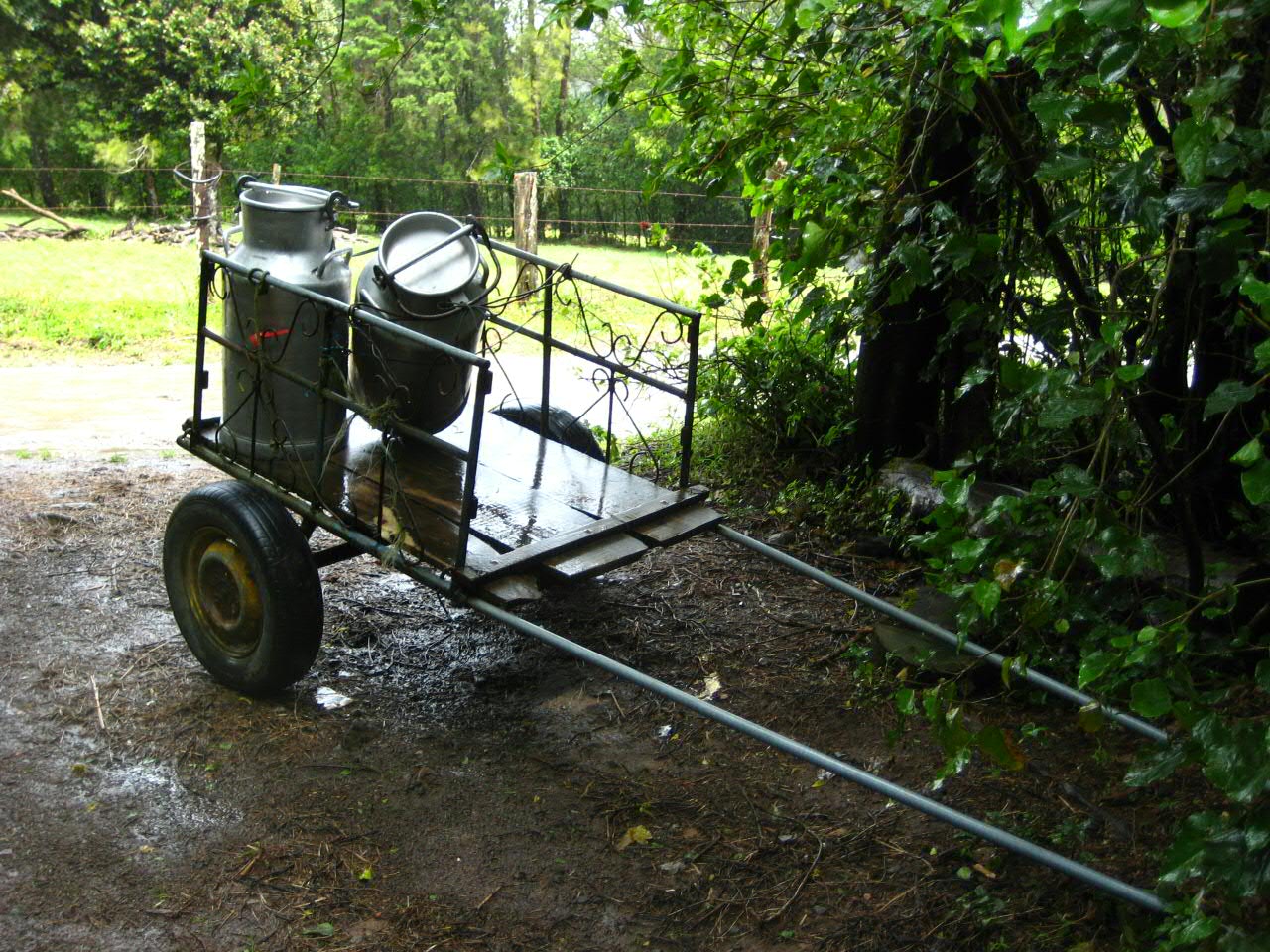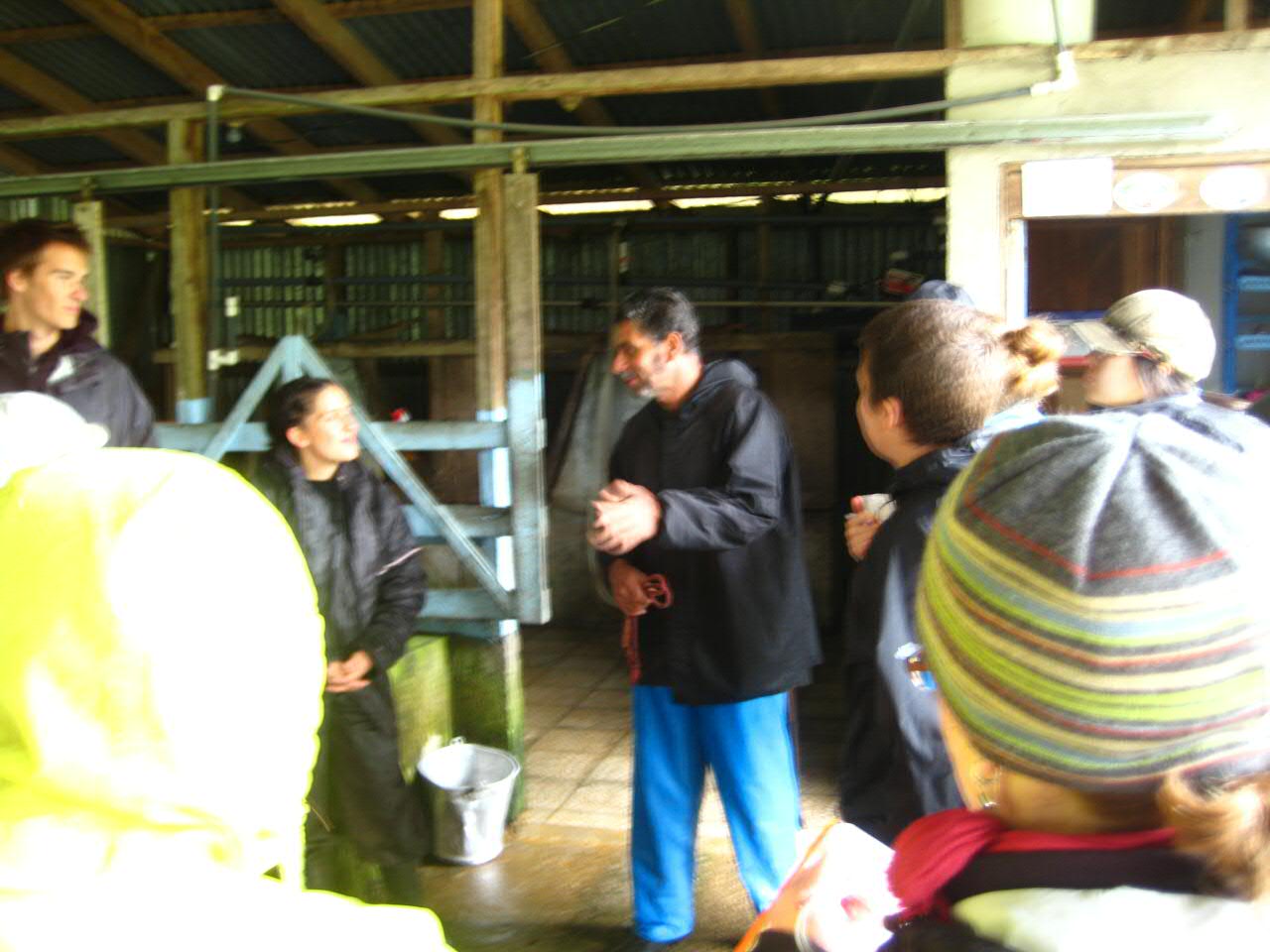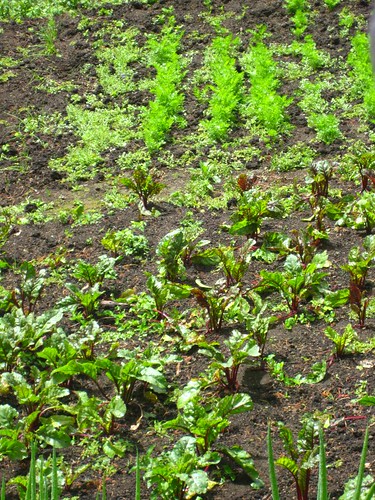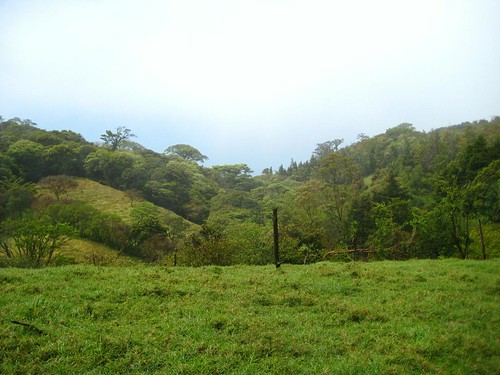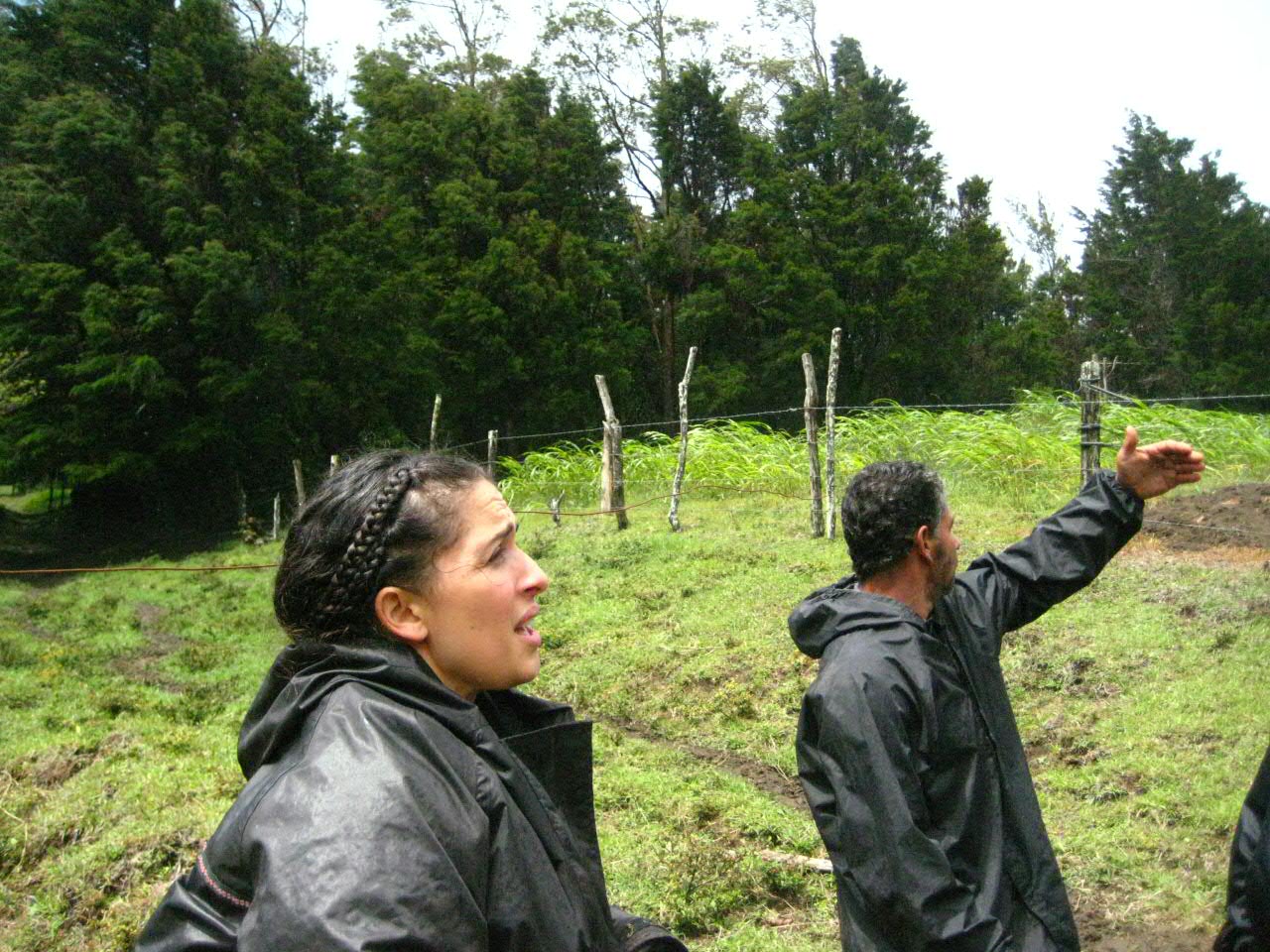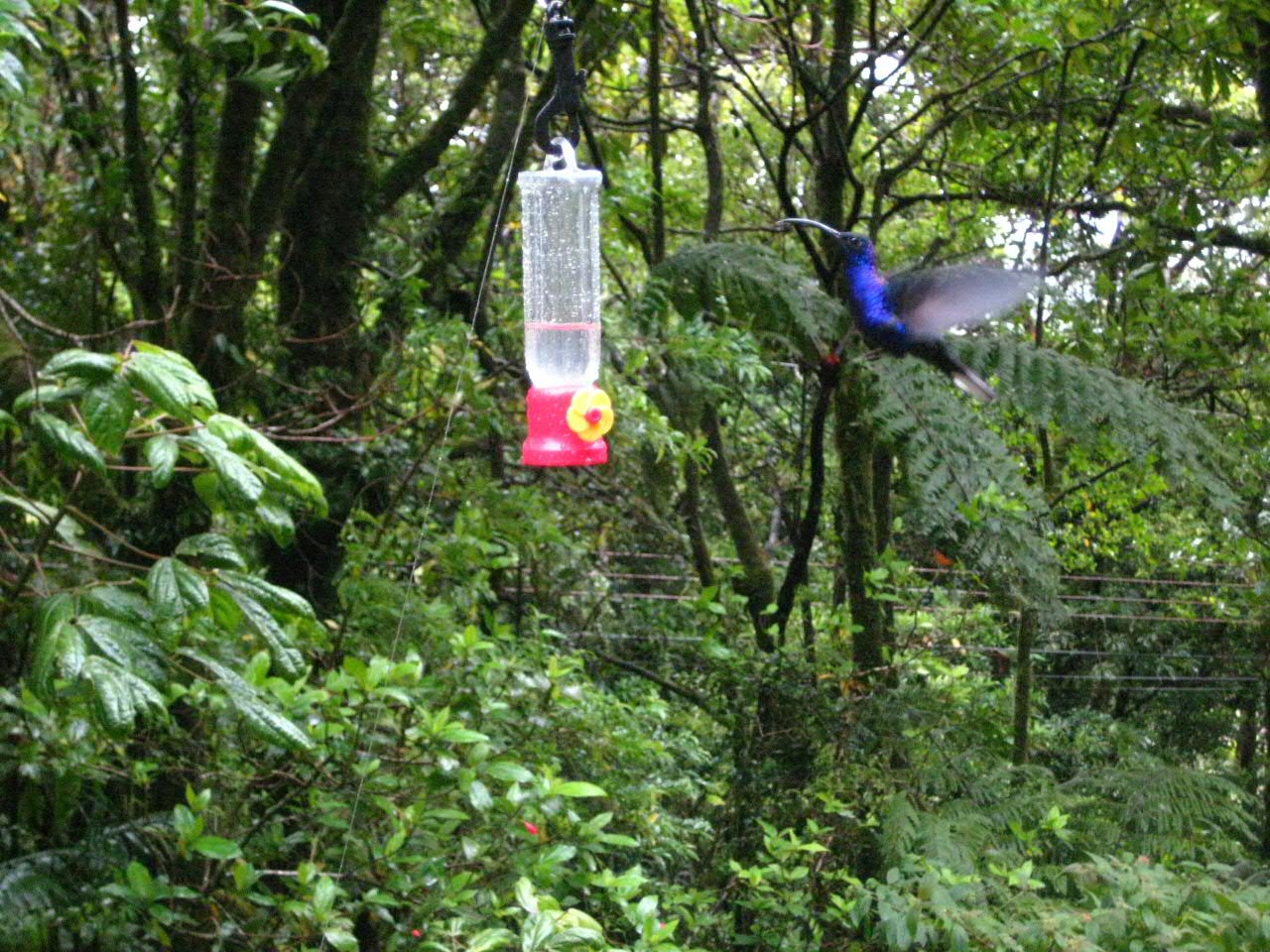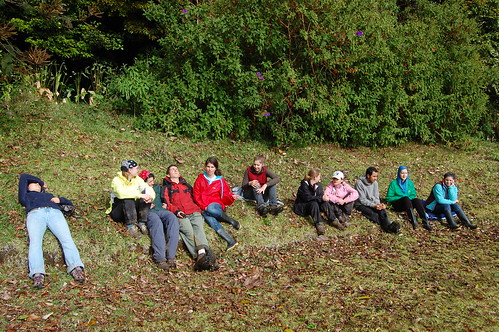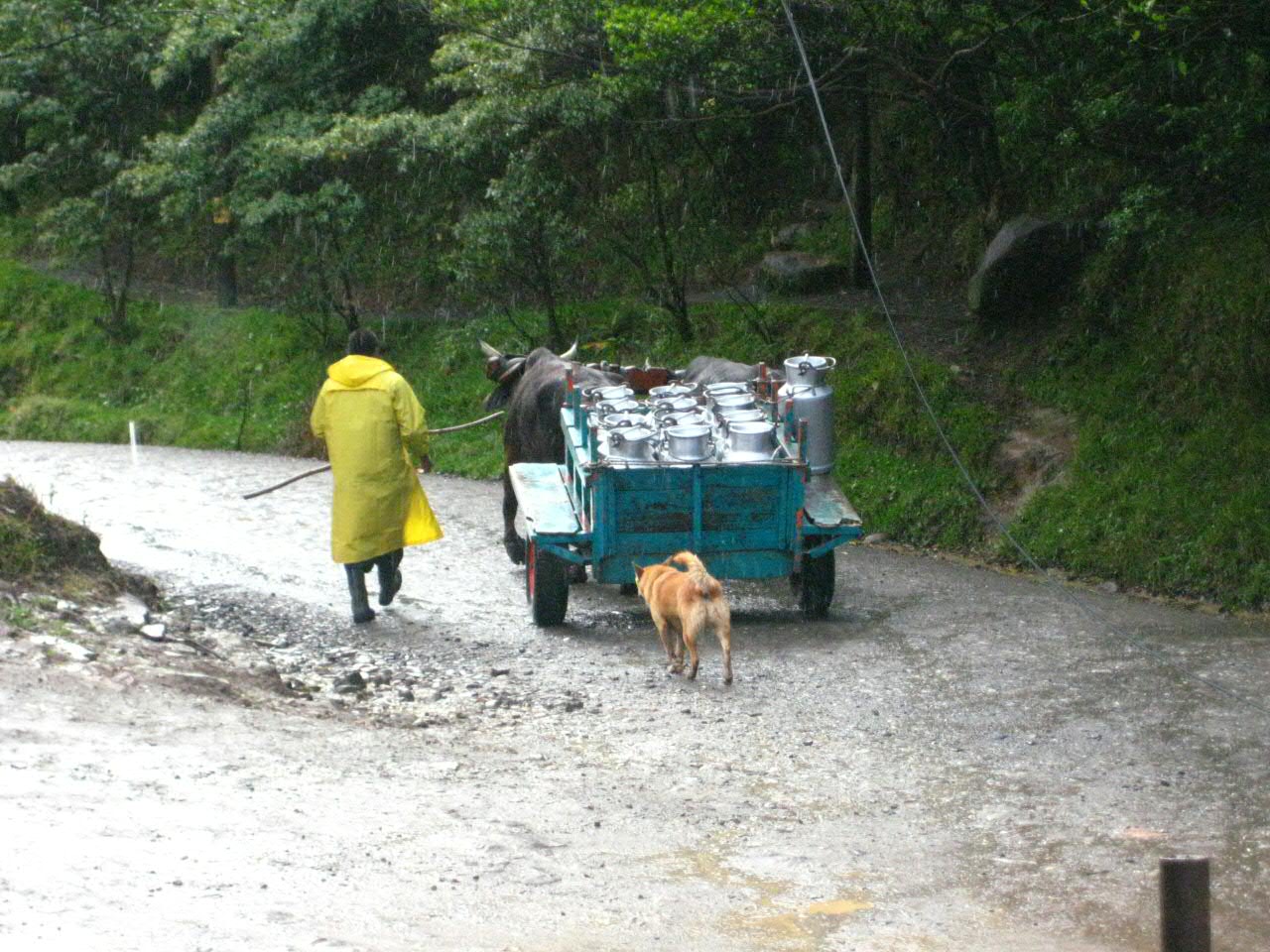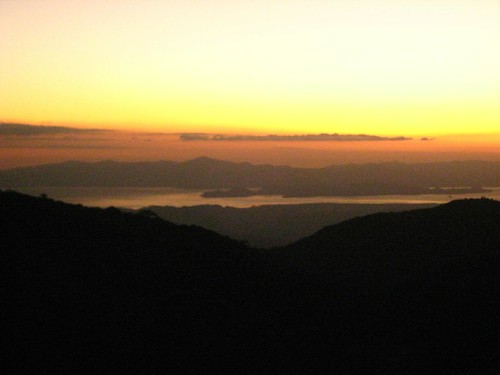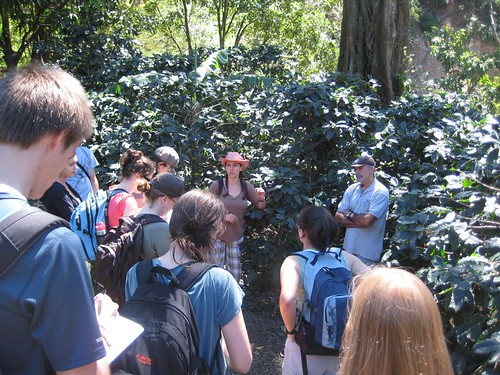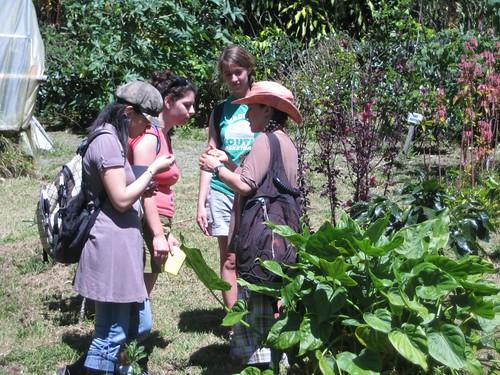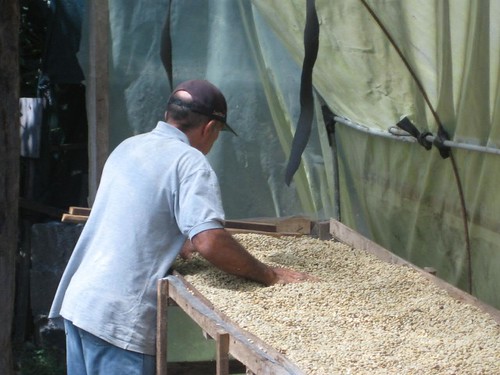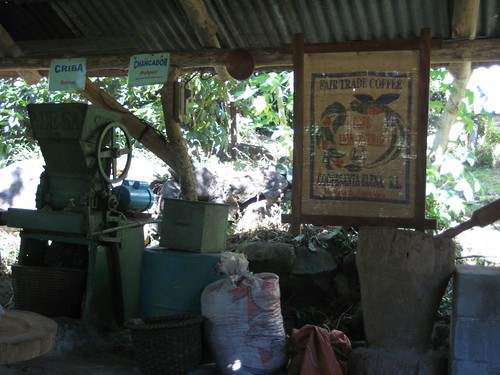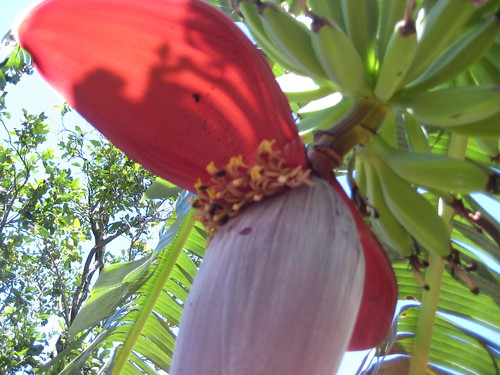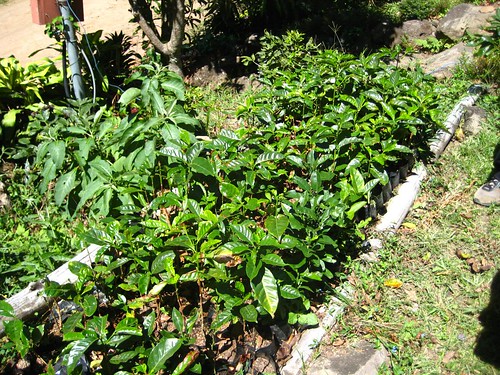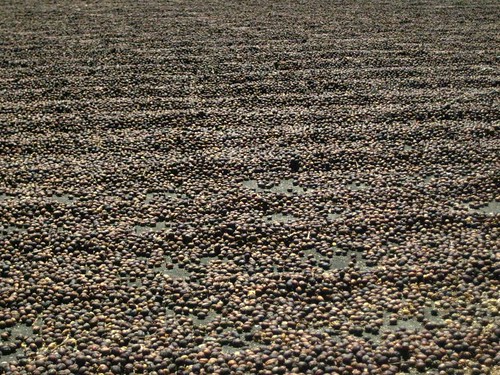La Guaria shouldn't even count as a town. On the dirt road between Santa Elena and the Pan-American highway, it amounts to four or five houses, a pulperia, a church, and a cemetery. It's one of those towns where, by the time you realize you're in La Guaria, you aren't in La Guaria any more.
I spent last Saturday night in La Guaria, at the farm of Doña Santamaria and her daughter Sandra, a wonderful twenty three year old woman who lives in Santa Elena with her husband (the town veterinarian) and Marcos, their two year old son.
Sandra is on the junta directora of the feria del agricultor (director's committee of the local farmer's market) – I think she's in charge – and is trying to promote the Saturday morning market by recruiting more local farmers, bringing school and church groups in to perform, and increasing awareness that the market even exists among residents as well as tourists. This is the third iteration of the market in the last few years; it has started and failed twice, but attempt number three has been going for a year now. I've been a few times (usually to buy mangoes, a watermelon, or empenadas) and every time I have witnessed a steady stream of English and Spanish speakers wandering around the high school gym and buying produce from the six or so farmer's tables.
Sandra and her mom sell homemade queso fresco (“fresh-” or “farmer's cheese” – un-aged cheese popular throughout Costa Rica and, I think, Central America) at the market. Her mom makes the cheese at the farm we visited, with help from her daughter a few days a week and her son, who is studying accounting in Puntarenas, on the weekends. They keep chickens, cows, two hogs, and a horse.
After the market ended last Saturday, four of us piled into the back of the family's covered pickup truck for a bumpy, hour-long drive down the mountain. Our mission: to learn about the farm, and document some part of what they do to turn it into a three minute slide show or video, which will be aired at the feria de agricultor as part of a series advertising local farming and the benefits of buying local.
The family was amazingly sweet and hospitable, and they opened their home to us, fed us, and allowed us to generally get in their way for twenty four hours on very short notice, expecting nothing in return. But the weekend was extremely awkward for me, painfully so at times, as we struggled to communicate, tried really hard to not be overly obtrusive, and failed pretty miserably at actually being useful.
The weekend was one of what our anthropology professor calls “humble learning” and was the first real cultural challenge I have experienced so far on this trip.
II.
Maybe two kilometers past the houses and the cemetery of La Guaria, a nondescript gate marked the farm entrance, and the old pickup slipped and slid a final kilometer down the steep gravel road to the farmhouse. The farm was a beautiful concoction of stuff, piled everywhere in a this-looks-scattered-to-me-but-whoever-put-it-there-did-so-for-a-reason sort of way, exactly how I imagine my attic to look in 20 years, and how I am sure my living room will look until I get around to owning an attic.
Years ago, a windstorm had blown their house down, leaving nothing but the raised wooden foundation. They have since built a new house right next to the old, so the flat wooden surface that used to be the floor has essentially become the biggest private deck in Costa Rica.
We spent the afternoon getting a tour of the farm and hearing about their chicken side-business (they buy and raise chickens, a few hundred at a time, to butcher and sell in Santa Elena). We met the cows and the horse, played with Marcos (Sandra's two year old), ate mangoes and watermelon, and walked down to their soon-to-be fish pond to watch the tail end of a beautiful sunset.
The bumpy, rainbow-filled ride down the mountain and the lazy evening had taken our minds off the humble learning of the morning, mainly a wonderfully botched “do I kiss you on the cheek or not?!?” greeting, halted and confusing conversation about transportation and sleeping arrangements, and attempting to rearrange and cancel our other weekend's plans (we had no idea until that morning they intended us to stay the night) without cell phones or answering machines.
The morning, however, brought it's own host of humility-inducing moments. We woke up at seven to milk the cows, but only one of us had any real experience. Sarah's older sister owns a farm, so she did just fine. The rest of us were total beginners: Haeinn and I had milked our first cow two weeks earlier when we visited Don Evelio's farm, and Amanda, despite her repeated statements that weekend that she wanted to have a milk cow when she grew up, had never actually tried to milk one.
The next couple of hours involved:
me trying in vain to coax an unruly cow into the barn, only to have it keep walking away from me as I repeatedly tried to run around behind it and not just scare it further away;
Sarah, Amanda, and I all getting shat upon by the cows we were trying to milk;
Marcos, with the best milk mustache I have ever seen, actually walking right up to us as we milked, sticking his empty mug between the udders and the bucket we were supposed to be filling, and drinking what little milk we could eek out straight from the cow, leaving our buckets empty; and
Being absolutely sure we had gotten all the milk out of a cow there was to get, only to have Sandra or her brother Eric walk up and, while holding a conversation and looking another direction, fill up a half a bucket in two minutes.
Haeinn and Sarah left at around 10:30 to catch the Santa Elena-bound bus from San Jose that passes by the farm each morning, but Amanda and I had other plans. After eating breakfast with the family, and then spending an hour peeling the shrimp that would be our lunch, we went back out the farm with Sandra's mom to learn how to make cheese with the fresh milk. Being only two people was a lot less obtrusive than being four, and we got a chance to watch, ask questions, and help as she separated the curds from the whey, added a coagulant and salt to flavor the cheese, laid a cheese cloth into their one stainless steal mold (now I know where cheese cloth gets its name!), and compressed the to-be-cheese liquid into the mold.
III.
Every time we had mentioned the notion of walking back to Santa Elena, the whole Santamaria family, as well as Sarah and Haeinn, pretty much laughed at us and called us crazy. As Amanda and I finished lunch, and realized both how hot it was at mid-day this far down the mountain and just how far down the mountain from home we actually were, we started to wonder if we were crazy, too.
We left the house at 2:15 to start the trek. We had no map and didn't know exactly how far the walk actually was, and it didn't help that we spent the one hour drive down the day before in an enclosed camper with no windows: we had no landmarks to base our progress on. It was only one road though, and if we needed to, we could flag down the bus from Puntarenas, which would pass us at some point that afternoon.
It was amazing. The dirt road, up hill the whole time, traveled along the top of a mountain ridge; our view switched back and forth between the green San Luis Valley to our east (where we hiked a few weeks before) and a crystal clear view of the Gulf of Nicoya and the Nicoya Peninsula to our west. We were passed by car after car of tourists and Ticos, some of whom gave us nods of respect (we were really far from anywhere) and the rest of whom just looked at us quizzically, wondering what the hell we were doing. We were offered – and we subsequently turned down – three rides (all by Ticos, none by tourists), and when the bus from Puntarenas passed us at around 5:00, we waved it on only to see our friend Hillary stick her head out a window to say hi as the bus drove by.
In between what we think was almost twenty kilometers of good conversation and repeatedly gaping with awe at the overwhelming beauty that surrounded us, I spent the hike struck a pervasive spirit of fulfillment. I have spent the last five or six years noticing with envy travelers who were, in my book, doing it right: the French tourist I met in the Desolation Wilderness in California a few years ago, backpacking solo with a towel as a sleeping pad and apples and bananas for all his meals; the older couple Ben and I ran into in a Bryce Canyon, Utah campground last summer, on the last leg of their circular, eight week nationwide road trip and National Park tour; and the groups of two or three young people I see everywhere traveling their way, walking across Europe, biking across the US, or flying to Costa Rica to surf and take yoga lessons.
This was finally me. Twenty three may be a small number of people to go to school with, but it's a huge number to travel with, and this program has reminded me how much I dislike group travel and how hard it is experience a place from the window of a tour bus. It was just an afternoon, but it was the epitome of how I want to travel, both here in Costa Rica and in the future.
---
When I publish this post, it will be early Saturday morning, the first day of our Spring Break. We're off to see our first Costa Rican dry forest and an artisan community frequented by one of our professors, then Nicaragua for two days and back to Costa Rica for a few days on the beach. More here in a few weeks.

